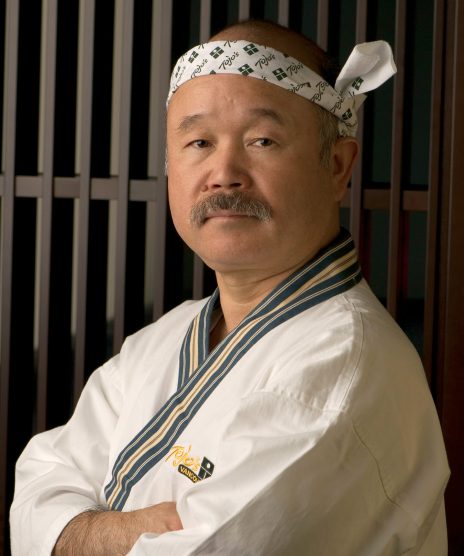Pacific Coast Wasabi
All who frequent sushi joints are familiar with wasabi, that sinus-clearing, bright-green condiment obligatorily served alongside pickled ginger. Yet what many diners do not realize is that their spicy wad of neon paste is actually simulacrum—only as real as the imitation crab in a California roll. Genuine wasabi—the really good stuff—is a rarity on most North American plates.
That might be because Wasabia japonica, a cruciferous horseradish relative with heart-shaped leaves, white flowers, and a bulky rhizome, is one of the hardest crops in the world to grow. Of course, that also makes it one of the most lucrative. Netting up to $170 per kilogram, the return of reaping this persnickety spice-bomb motivated British Columbian farmer Brian Oates to found Vancouver-based company Pacific Coast Wasabi, after honing his cultivation techniques for years in the University of British Columbia’s greenhouses.
“It’s a daunting task to grow wasabi, and to grow it to sawa quality, what the Japanese call their best quality,” says Oates. Sawa refers to a semi-aquatic cultivation practise derived from the traditional technique of growing wasabi along mountainous riverbeds in Japan. It’s said to be a higher quality than field, or oka, wasabi, but its dependence on cool, rushing water makes for challenging artificial recreation (especially when most of North America’s streams are fish-bearing, and protected from agricultural intervention).
Oates has circumvented these obstacles by developing complex computer-controlled greenhouses that grow the plant without the need for rivers or large volumes of water. Now, Pacific Coast Wasabi operates throughout British Columbia, with plans to open greenhouses on Vancouver Island and in the Fraser Valley, as well as in Washington and Oregon. “Growing wasabi is finicky,” Oates says, “but the analogy I use is that it’s like learning how to ride a bicycle. No matter how many times you fall and scrape your knees, you get up again and find that balance. We’ve been able to find that balanced ride past those potholes we used to get caught up in.”
The company now exports its wasabi to restaurants, retailers, and individuals all over the world, from Bangkok to Cape Town. It’s been lauded for a taste that’s more herbal, smooth, and green than of its harsh, artificial doppelganger, which Oates cautions is merely “a combination of horseradish, food colouring, and chemicals.” Fresh wasabi, notably, is also never served as a paste, but rather grated, and not permitted to mingle with soy. “To eat it properly, the wasabi should never touch the soy sauce,” Oates says. “If you have a piece of sushi, you put the wasabi on one end of it and dip the other end in soy sauce. We’ve been doing it all wrong by mixing it in a little dish of soy sauce.”
Rich with naturally-occurring, anti-carcinogenic isothiocyanates—or organic compounds found in tangy herbs like horseradish and mustard—and known for its antibacterial properties, fresh wasabi’s benefits go beyond its superior taste. Served alongside wild salmon sashimi, the Canadian-grown delicacy adds a healthy, elevated edge that’s essential for sushi connoisseurs to sample raw.
Originally published July 7, 2016.
_________
Never miss a story. Sign up for NUVO’s weekly newsletter.





